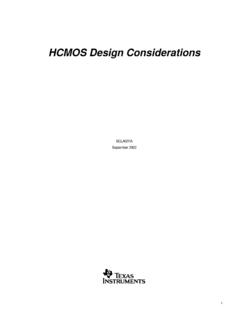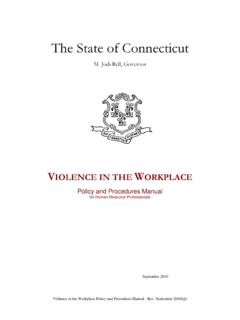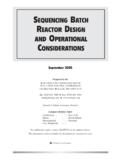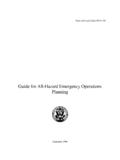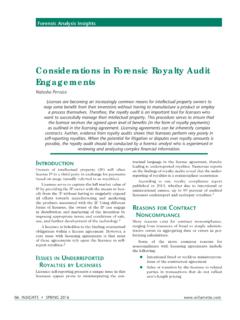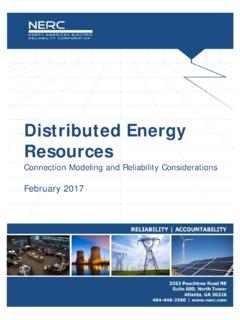Transcription of Writing Learning Outcomes: Principles, Considerations, and ...
1 Writing Learning Outcomes: principles , considerations , and Examples Writing Learning Outcomes: principles , considerations , and Examples Jean-Fran ois Richard, Associate Vice-President, Academic and Faculty Affairs Universit de Moncton A resource document published by the Maritime Provinces Higher Education Commission January 2016 Writing Learning Outcomes: principles , considerations , and Examples Additional copies of this Report may be obtained online ( ) or from: Maritime Provinces Higher Education Commission 82 Westmorland Street Box 6000 Fredericton, NB E3B 5H1 Canada Telephone: (506) 453-2844 Email: For an overview of the MPHEC and its activities, please visit the web site at: ISBN: 978-1-988264-01-1 Writing Learning Outcomes: principles , considerations , and Examples Table of Contents 1.
2 Introduction .. 1 2. Learning outcomes as a guide for planning, teaching and assessment .. 1 General Learning outcomes .. 2 Specific Learning outcomes .. 6 3. Writing Learning outcomes: principles , considerations , and other examples .. 6 Writing general Learning 6 Writing specific Learning outcomes .. 6 4. Conclusion .. 8 APPENDIX A. Nomenclature for Program and Course Development and Writing Learning Outcomes: principles , considerations , and Examples Writing Learning Outcomes: principles , considerations , and Examples Writing Learning Outcomes: principles , considerations , and Examples 1.
3 Introduction The task of planning for teaching and Learning is of vital importance for determining the various elements that will provide direction for a program and all the courses it comprises. In terms of course development, the list of content topics determined by faculty can be used as an important planning tool; however, it does not identify the knowledge, skills and competencies that the students will have to develop by the end of their Learning process in the context of a given course (Pr gent, 1994). It is in Writing the Learning outcomes that the professor can define these dimensions more accurately. Consequently, well-defined Learning outcomes clarify not only the goals to be reached in a course, but also help clarify the educational directions to take for the delivery of the course as well as the framework for the assessment of Learning .
4 To ensure the best possible quality in our curricula, the purpose of this document is to present a synthesis of principles and considerations in the process of Writing Learning outcomes. A presentation on this topic seems fitting since the Universit de Moncton has just revised its policy on program assessment (May 2013) in order to ensure better compliance with the Maritime Provinces Higher Education Commission s revised policy (MPHEC, March 2013), which puts more emphasis on student Learning outcomes for the sake of transparency and accountability. The hope is that this document will help in our collective efforts from classroom instruction to the development and revision of programs. 2. Learning outcomes as a guide for planning, teaching, and assessment According to Legendre (2005) and Miller, Linn & Gronlund (2013), from an educational standpoint, Learning outcomes specify the type of performance that a student must achieve during or by the end of an educational context ( Learning task, course, etc.)
5 Or a program of study. More specifically, a Learning outcome expresses the lasting changes that must arise to the student during or following an educational experience [translation] (Legendre, 2005, p. 946). Given that Learning is not directly observable, its manifestations, which result from Learning and show lasting changes , must be perceptible by means of indicators showing a transformation or a change with respect to behaviours related to targeted Learning ( the ability to solve a math problem following instruction). Generally speaking, and by analogy, a Learning outcome can been seen as a target to meet. The targets or outcomes of a course are related to the Learning that the faculty member sets for the students to achieve as part of a given body of knowledge (Pr gent, 1994).
6 In general, a lack of clearly defined Learning outcomes can have a negative effect on the quality of instruction, Learning , and Learning assessment. Such deficiencies in planning have a tremendous impact on the consistency of teaching overall, and especially on Learning assessment. We could therefore consider that the presence of clearly defined Learning outcomes offers a series of advantages, both for faculty and students (Pr gent, 1994): 1. Clearly state intentions through outcomes (general and specific); 2. Design and implement Learning activities to achieve the established outcomes; 3. Evaluate only the outcomes through activities that have been conducted in the classroom. The first advantage is that faculty are able to state the outcomes or directions of their course to students in a clear, plain, and precise manner given that the course outcomes help them to specify the nature of the topics addressed in a course as well as the nature of the expected Learning (Pr gent, 1994).
7 This advantage aligns with a basic edumetric principle, transparency in the teaching/ Learning /assessment process (Bercier-Larivi re and Forgette-Giroux, 1999). The second advantage is that faculty must choose only the educational approaches and teaching strategies that can help to achieve the targeted outcomes. In fact, it would be absurd, even illogical, to use approaches that would not help to fully achieve the targeted outcomes (Pr gent, 1994). 1 Writing Learning Outcomes: principles , considerations , and Examples The third and most important advantage is that faculty must establish a direct relationship between the specific Learning outcomes and Learning assessment. Thus, once they have written out specific outcomes, they have, in turn, set out the nature of the exam questions or the evaluation criteria for a given piece of work (Pr gent, 1994).
8 General Learning outcomes As was mentioned earlier, the aim of the Learning outcome is to determine the lasting changes following a course or program of instruction. Consequently, general outcomes are used to provide direction with respect to what is to be learned in a program or in a specific course. These outcomes are expressed abstractly and present a wide range of anticipated characteristics or lasting changes that may develop in a group of students following an extended Learning scenario (Legendre, 2005). These changes are often expressed in terms of knowledge to acquire and skills and competencies to be developed. Moreover, general Learning outcomes determine the Learning path on the basis of the three main domains of Learning , which are expressed through various taxonomies.
9 These three main domains are cognitive, psychomotor, and affective Learning . Even though all of these domains are part of teaching at the university level, most of the Learning at this level is likely to be cognitive in nature, regardless of the program of instruction. While we certainly do not want to neglect the psychomotor and affective Learning domains, this document is oriented more towards the Writing of cognitive Learning outcomes. In this regard, the taxonomy that is best known and used throughout the world is that developed by Benjamin Bloom (1956). This taxonomy presents the Learning objectives as a continuum starting with the most basic cognitive ability objectives ( knowledge and understanding) and moving on to the more complex cognitive abilities and skills ( synthesis and evaluation).
10 Tables 1 and 2 present a synthesis of Bloom s Taxonomy, including examples of verbs that can be used in Writing out general and specific objectives or outcomes at the different cognitive levels and content that is often exploited at these different levels of this taxonomy. Depending on the verb used, the statement of the objective or outcome helps determine the expected complexity in terms of Learning . Table 1: Bloom s Taxonomy Knowledge Knowing how to accurately relate or reproduce any previously acquired information or knowledge. Comprehension Understanding the meaning, translation, interpolation, and interpretation of instructions and problems. Application Using previously acquired knowledge, skills and competencies in new situations in an effort to solve problems in the best way possible or in a unique way.
